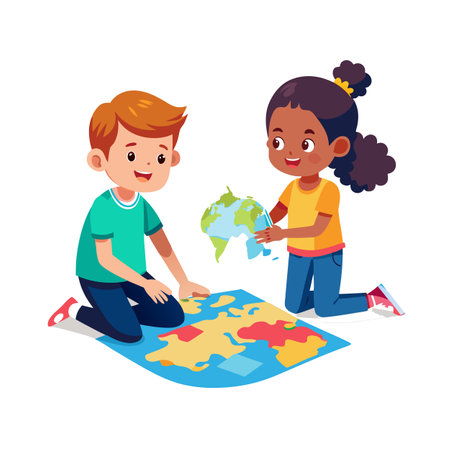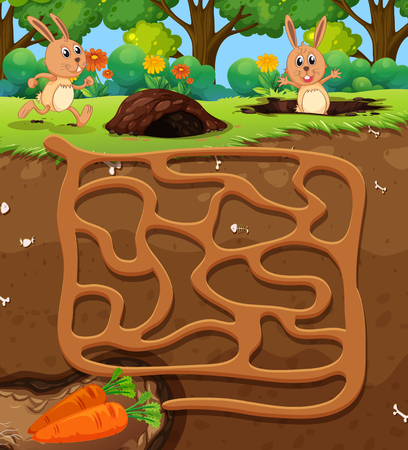Introduction to Eco-Kids and Environmental Stewardship
Across the United States, a growing movement known as “Eco-Kids” is inspiring children to become active stewards of the environment. At its core, the concept of Eco-Kids centers on empowering young learners to care for nature through hands-on outdoor experiences, instilling values of responsibility, curiosity, and respect for the planet. Fostering environmental stewardship at an early age isn’t just about teaching kids to recycle or pick up trash—it’s about nurturing a lifelong connection with the natural world and understanding how their actions impact local ecosystems.
Why does this matter? In a rapidly urbanizing society where many children are disconnected from nature, developing a sense of environmental stewardship is essential for building future leaders who value sustainability. According to leading American educators and conservationists, outdoor education provides children with opportunities to engage all their senses, deepen critical thinking skills, and foster teamwork through real-world problem-solving. These experiences go far beyond what’s possible in a traditional classroom setting.
The importance of hands-on outdoor education is especially significant in the U.S., where diverse landscapes—from the Appalachian Trail to California’s redwood forests—offer endless opportunities for exploration and learning. By integrating environmental lessons into America’s top educational trails, programs are helping kids build knowledge and confidence while also cultivating a sense of wonder for the great outdoors. As shown below, the benefits of teaching environmental stewardship through outdoor education are numerous:
| Benefit | Description |
|---|---|
| Connection to Nature | Kids develop a personal relationship with local environments, fostering empathy and care. |
| Critical Thinking | Real-life challenges encourage observation, analysis, and creative problem-solving. |
| Physical & Mental Health | Outdoor activities promote exercise and reduce stress, boosting overall well-being. |
| Teamwork & Communication | Group projects teach collaboration and social skills vital for community action. |
With dedicated Eco-Kids programs flourishing across the country, American families and educators have unique opportunities to raise environmentally responsible citizens ready to protect our nation’s treasured landscapes for generations to come.
2. America’s Most Inspiring Educational Trails
Across the United States, a network of educational trails has been thoughtfully designed to engage kids and families in hands-on environmental learning. These trails, often found in national parks, state parks, and protected nature preserves, are equipped with interpretive signage, interactive exhibits, and even ranger-led activities—all tailored to teach young explorers about ecology, conservation, and sustainability in a fun and memorable way. Whether winding through ancient forests or skirting vibrant wetlands, each trail offers unique lessons rooted in local ecosystems.
Top Educational Trails for Eco-Kids
| Trail Name | Location | Key Features | Main Educational Focus |
|---|---|---|---|
| Junior Ranger Trail | Yellowstone National Park, WY/MT/ID | Ranger programs, interactive signs, activity booklets | Wildlife conservation & geothermal features |
| The Nature Loop | Great Smoky Mountains National Park, TN/NC | Sensory stations, flora/fauna ID guides | Biodiversity & habitat preservation |
| Discovery Trail at Fernbank Forest | Atlanta, GA | Eco-challenges, observation platforms | Urban ecology & forest ecosystems |
| Anacostia Watershed Trail | Washington, D.C. | Water quality monitoring stations, watershed maps | Watershed health & pollution prevention |
| Kid’s Ecology Trail at Muir Woods | California | Redwood canopy walkways, interpretive panels | Sustainable forestry & ancient trees |
| Prairie Learning Pathway | Tallgrass Prairie Preserve, OK | Prairie restoration sites, native plant gardens | Grassland conservation & pollinator habitats |
Making Every Step Count: Interactive Learning in Nature
The best educational trails go beyond simple observation—they immerse kids in real-world environmental stewardship. For example, at Yellowstone’s Junior Ranger Trail, children complete eco-missions and earn badges by identifying animal tracks or learning about geyser safety. In the Anacostia Watershed Trail, students can test water samples or build models of healthy riverbanks. These experiences foster a sense of responsibility and empower kids to become lifelong guardians of the natural world.
A Growing Movement for Sustainability Education Outdoors
The popularity of these eco-focused trails is growing as parents and educators recognize their value. Schools organize field trips; scout troops use them for badge work; families plan vacations around them. Each visit not only deepens kids’ understanding of ecology and conservation but also inspires them to take small actions—like recycling or planting pollinator gardens—when they return home. America’s top educational trails are nurturing the next generation of eco-heroes one adventure at a time.

3. Engaging Learning Activities on the Trail
America’s top educational trails are more than just scenic walkways—they’re dynamic classrooms where children can dive into hands-on learning. Trail educators and eco-guides across the country are turning hikes into unforgettable experiences by incorporating creative, kid-centered activities that foster a deep connection to the environment. Here’s how some of these engaging activities work:
Citizen Science Projects
Young explorers become scientists in the field as they collect data on local wildlife, weather patterns, or plant growth. Through partnerships with organizations like the National Park Service or Audubon Society, kids contribute valuable information to real research projects. This not only teaches scientific methods but also shows children that their observations can make a difference.
Popular Citizen Science Activities
| Activity | Skills Developed | Example Trails |
|---|---|---|
| Bird Counting | Observation, Identification | Cuyahoga Valley National Park (OH) |
| Insect Surveys | Data Collection, Classification | Muir Woods National Monument (CA) |
| Pond Water Testing | Chemistry Basics, Environmental Monitoring | Great Smoky Mountains National Park (TN/NC) |
Nature Scavenger Hunts
Scavenger hunts transform ordinary walks into exciting adventures. Kids receive lists of natural items—like pinecones, animal tracks, or wildflowers—to find along the trail. These hunts encourage curiosity and teach children to observe details they might otherwise overlook, all while having fun outdoors.
Sample Scavenger Hunt Items
- A feather from a native bird species
- An example of camouflage in nature (like a hidden insect)
- A leaf showing signs of insect activity
- Lichen growing on rocks or trees
- A sound recording of a songbird
Habitat Restoration Projects
Kiddos roll up their sleeves and get involved in hands-on stewardship through habitat restoration. Whether planting native wildflowers to attract pollinators or removing invasive species, these projects empower young people to take direct action for conservation. They learn teamwork, responsibility, and the tangible impact of environmental care.
Benefits of Trail-Based Learning Activities:
- Builds environmental awareness and empathy for wildlife
- Encourages teamwork and community involvement
- Teaches practical science and stewardship skills applicable beyond the trail
- Makes learning interactive, memorable, and rooted in American outdoor traditions
Through these engaging activities, America’s educational trails help raise a new generation of eco-stewards who feel at home in nature—and ready to protect it for years to come.
4. Cultural Relevance: Connecting Kids with Local Ecosystems
One of the most inspiring aspects of America’s top educational trails is how they go beyond teaching basic environmental science—they immerse young hikers in the unique tapestry of local culture, history, and ecology. Trail programs across the United States intentionally integrate lessons about regional heritage, indigenous stewardship practices, and community values to foster a deep-rooted sense of place and purpose among eco-kids.
Infusing American History and Indigenous Perspectives
Educational trail guides often highlight stories of early settlers, conservation pioneers, and indigenous communities who shaped—and continue to steward—the landscapes children explore. For instance, on trails in the Pacific Northwest, children might learn about the traditional ecological knowledge of local Native American tribes, including their sustainable fishing and foraging practices. In the Appalachian region, trail educators may discuss how historical events like the creation of the Appalachian Trail itself symbolize America’s ongoing relationship with wilderness preservation.
Bridging Past and Present: Trail Program Features
| Region | Historical Focus | Indigenous Connections | Community Values Taught |
|---|---|---|---|
| Pacific Northwest | Logging history, conservation movements | Salmon restoration, native plant uses | Sustainability, respect for water resources |
| Southeast US | Civil Rights landmarks, local flora & fauna | Cherokee land management traditions | Diversity, stewardship ethics |
| Southwest US | Puebloan architecture, desert adaptation | Hopi dry farming techniques | Adaptability, resourcefulness |
| Northeast US | Colonial forest management, abolitionist routes | Iroquois “Three Sisters” agriculture | Cooperation, food security awareness |
Creating a Sense of Place for Young Trail Users
This blend of cultural storytelling and hands-on learning helps youth appreciate that environmental stewardship is not just about protecting nature—it’s about honoring the people and traditions that have sustained these landscapes for generations. By connecting children with their local ecosystems through authentic narratives and community engagement projects (such as invasive species removal or native planting days), these programs transform passive recreation into active citizenship. Ultimately, educational trails serve as living classrooms where every step connects kids more deeply to America’s diverse environmental legacy.
5. How Families and Schools Can Get Involved
Engaging with America’s top educational trails offers families, schools, and youth leaders a hands-on approach to nurturing environmental stewardship. Here are practical ways to get started and maximize the learning experience for eco-kids.
Participating in Trail Programs
Many national parks, local preserves, and nature centers offer family-friendly programs focused on conservation and environmental education. Parents and teachers can:
- Sign up for guided hikes and junior ranger activities.
- Join citizen science projects like bird counts or water quality monitoring.
- Volunteer for trail maintenance days to teach responsibility and teamwork.
Organizing Field Trips
Field trips provide immersive experiences that connect classroom concepts with real-world ecosystems. Consider these steps for successful outings:
- Plan ahead: Contact park rangers or trail managers to coordinate dates and customize activities based on age groups.
- Integrate curriculum: Align field trip goals with science, geography, or social studies standards.
- Prepare students: Discuss Leave No Trace principles before visiting to set expectations for respectful outdoor behavior.
Sample Field Trip Checklist
| Task | Responsible Party | Timeline |
|---|---|---|
| Obtain permissions & waivers | Teacher/School Admin | 2-4 weeks prior |
| Coordinate transportation | Parent Volunteers | 2 weeks prior |
| Packed lunches/snacks | Families/Students | Day of trip |
| First aid kit & emergency plan | Youth Leader/Chaperone | Ahead of trip |
| Pre-trip lesson on stewardship | Teacher/Youth Leader | A week before trip |
Using Educational Resources Alongside American Landscapes
The U.S. offers a wealth of online and print resources designed to help youth connect with nature. Teachers and parents can utilize:
- National Park Service Kids Portal: Games, activity guides, and virtual ranger talks.
- Nature journaling templates to encourage observation skills during hikes.
- Apps like iNaturalist or Seek for real-time plant and animal identification on the trail.
- Bilingual resources to make environmental learning accessible for diverse communities.
Sustainable Family Practices at Home and School
Environmental stewardship doesn’t end at the trailhead. Encourage kids to apply what they learn by:
- Starting recycling or composting projects at home or school.
- Caring for native plants in schoolyards or community gardens.
- Spearheading “green teams” to organize neighborhood clean-ups or energy-saving campaigns.
Together, families, educators, and youth leaders can inspire lifelong respect for America’s natural treasures—one adventure at a time.
6. Success Stories: Young Stewards Making a Difference
Across the United States, countless young eco-advocates are proving that age is no barrier to making a meaningful environmental impact. The transformative experiences found on America’s educational trails often spark a lifelong passion for stewardship in youth, leading them to launch innovative projects and inspire their communities. Here are just a few shining examples:
Trail-Inspired Youth Initiatives
| Name | Age | Trail Experience | Community Impact |
|---|---|---|---|
| Maya Williams | 13 | Junior Ranger at Yellowstone National Park | Launched a recycling drive at her middle school, reducing campus waste by 30% in one semester. |
| Carlos Ramirez | 16 | Appalachian Trail Volunteer Program | Founded a local hiking club focused on trail clean-ups and native plant restoration, engaging over 100 teens annually. |
| Sophie Chen | 11 | Nature Discovery Walks in the Pacific Northwest | Developed educational workshops about pollinators, now integrated into her city’s summer camp curriculum. |
| Aiden Brooks | 15 | Leave No Trace Workshop at Grand Canyon | Pioneered a “Pack It In, Pack It Out” campaign, significantly reducing litter at popular urban parks. |
Youth Voices Leading Change
The ripple effect of these young stewards’ efforts extends far beyond their individual actions. By sharing their stories through school presentations, social media campaigns, and local events, these students inspire peers and adults alike to become more conscious of their environmental footprint. Community leaders have taken notice, inviting these youth to participate in city council meetings and conservation planning committees—proof that trail-based education equips kids with not only ecological knowledge but also the leadership skills needed for civic engagement.
The Next Generation of Environmental Leaders
Organizations such as the National Park Service, Sierra Club Youth Corps, and regional outdoor education centers continue to support young changemakers through grants, mentorship programs, and platforms to amplify their voices. As more American children gain hands-on stewardship experience on our nation’s trails, we can look forward to a future where every community benefits from passionate, knowledgeable advocates for the natural world.

